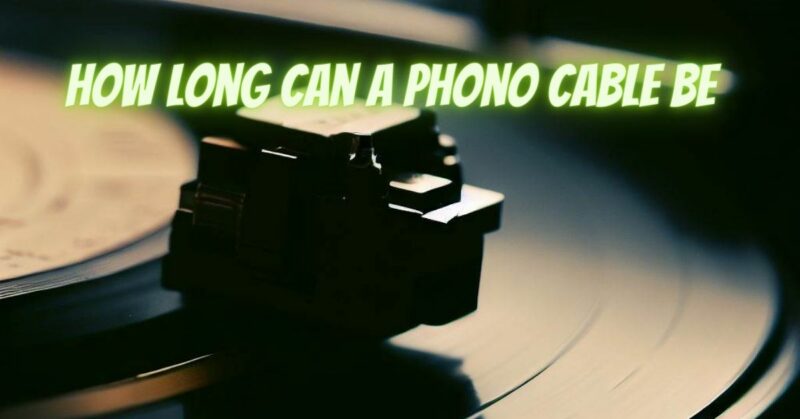Phono cables, also known as RCA cables or interconnects, play a crucial role in transmitting the audio signal from a turntable to a preamplifier or amplifier. The length of these cables can impact signal integrity, fidelity, and susceptibility to interference. In this article, we delve into the considerations surrounding phono cable lengths, factors influencing signal quality, and best practices for optimizing performance in vinyl playback systems.
Understanding Phono Cable Lengths
- Signal Transmission:
- Phono cables carry low-level signals from the cartridge in the turntable to the phono preamplifier, where they are amplified and equalized before being sent to the main amplifier or receiver.
- Unlike line-level signals, such as those from CD players or tape decks, phono signals are much lower in amplitude and more susceptible to noise and interference.
- Effects of Cable Length:
- Longer cable lengths can introduce signal degradation, attenuation, and susceptibility to interference, particularly in the case of phono signals, which are inherently weaker.
- Capacitance, resistance, and inductance characteristics of the cable interact with the impedance of the source (cartridge) and load (preamplifier), affecting signal transfer and frequency response.
Factors Influencing Signal Quality
- Cable Capacitance:
- Phono cables with higher capacitance values can act as low-pass filters, attenuating higher frequencies and affecting the tonal balance and transient response of the audio signal.
- Longer cable lengths typically result in higher cable capacitance, exacerbating these effects and potentially altering the sound quality.
- Interference and Noise:
- Longer cable runs increase the likelihood of electromagnetic interference (EMI), radio frequency interference (RFI), and ground loop issues, which can manifest as hum, buzz, or static in the audio signal.
- Shielding and grounding practices become increasingly important in mitigating interference effects, especially in setups with extended cable lengths.
Best Practices for Phono Cable Lengths
- Keep Cable Lengths Short:
- Whenever possible, use the shortest phono cable lengths necessary to connect your turntable to the phono preamplifier or amplifier.
- Position your turntable close to your audio system to minimize cable runs and reduce the potential for signal degradation and interference.
- Quality of Cable Construction:
- Invest in high-quality, low-capacitance phono cables with adequate shielding and robust connectors to minimize signal loss and interference.
- Avoid excessively thin or poorly shielded cables, as they may compromise signal integrity, especially over longer distances.
- Signal Boosting Options:
- In setups requiring longer cable runs, consider using a phono stage with adjustable gain to boost the signal level at the source, compensating for cable losses and preserving signal quality.
- Alternatively, active phono preamplifiers with built-in amplification can provide additional signal boosting capabilities, allowing for flexibility in cable length and placement.
While there is no strict limitation on how long a phono cable can be, it’s essential to consider the potential impact of cable length on signal integrity and fidelity in vinyl playback systems. Shorter cable lengths generally result in better signal quality and reduced susceptibility to interference, making them preferable in most setups. However, in cases where longer cable runs are unavoidable, careful selection of high-quality cables, attention to shielding and grounding practices, and consideration of signal boosting options can help mitigate potential issues and maintain optimal performance in vinyl playback systems. By understanding the factors influencing phono cable lengths and implementing best practices for cable management, enthusiasts can enjoy faithful reproduction of their vinyl collections with clarity, accuracy, and minimal distortion.

